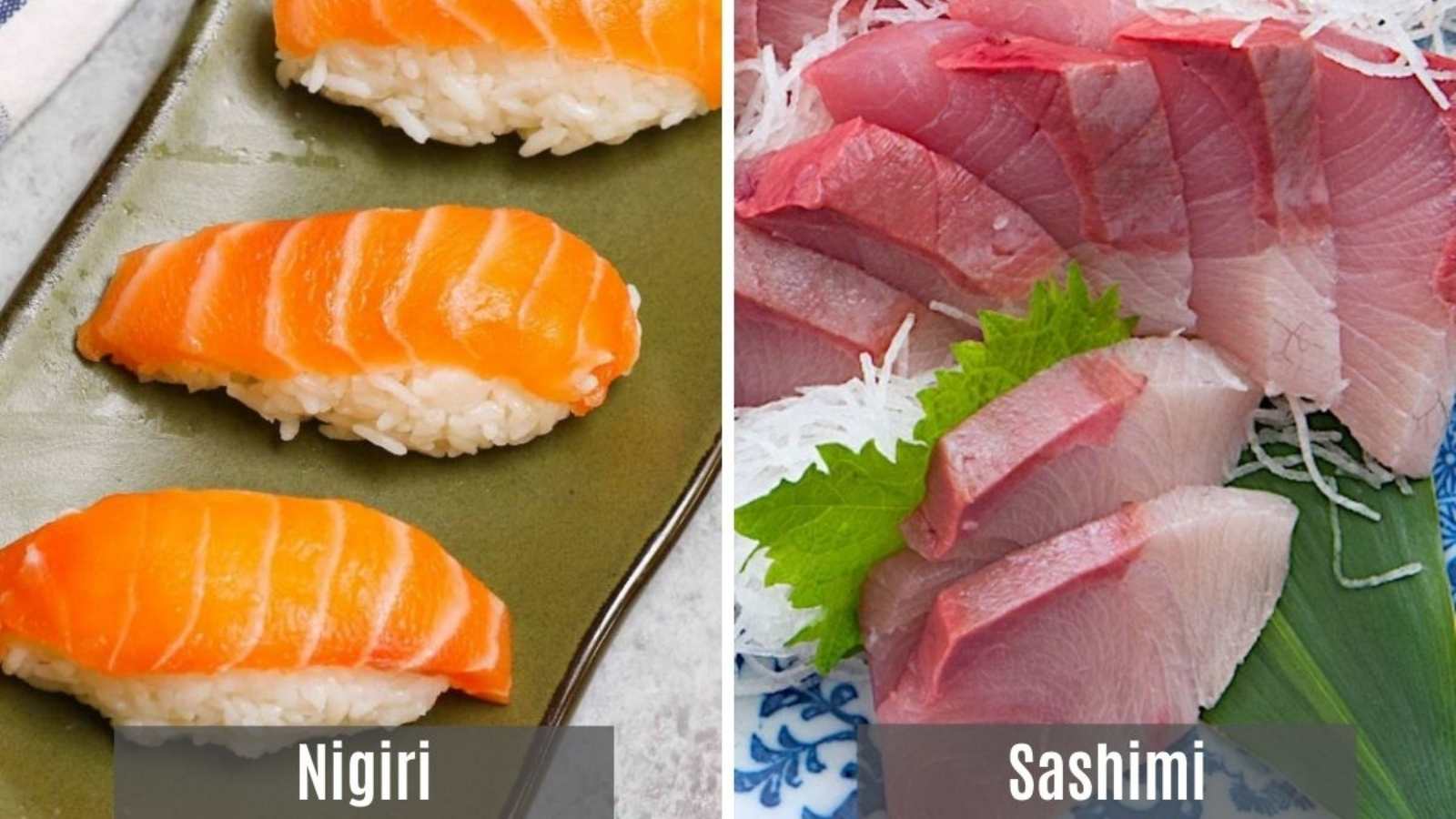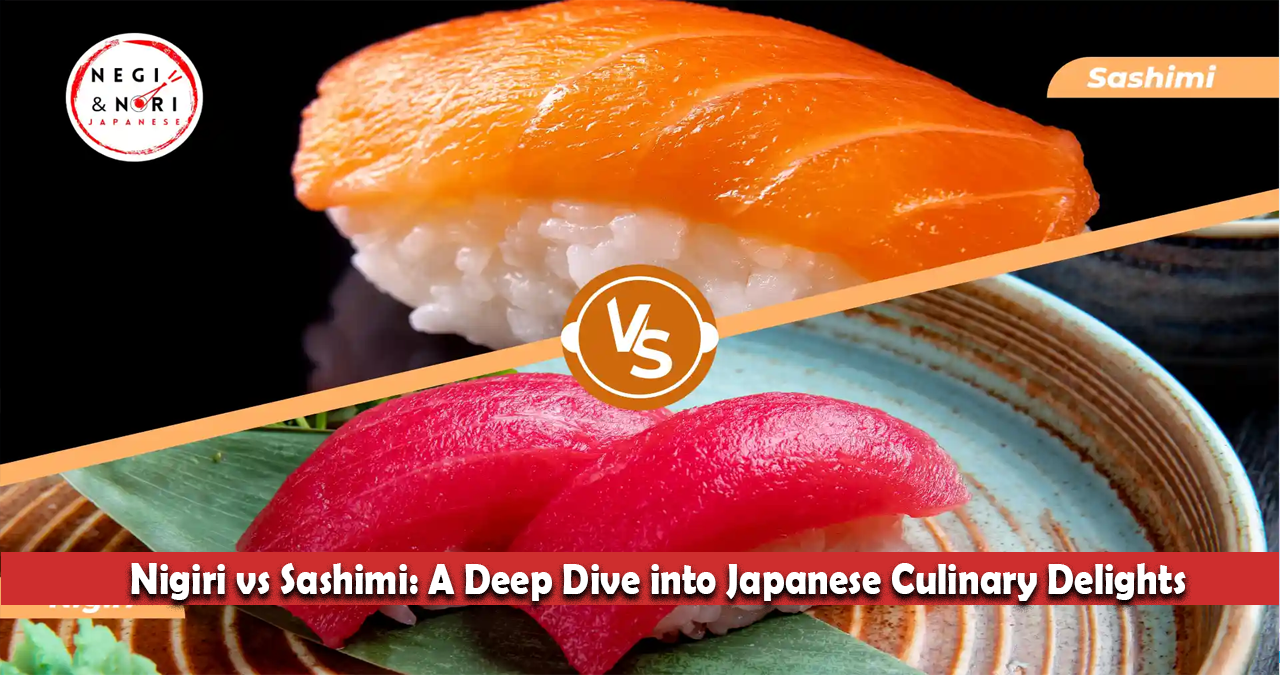When it comes to Japanese cuisine, few dishes capture the essence of its artistry and flavor like nigiri and sashimi. These two dishes are often confused, but they are distinct in their preparation, presentation, and taste. Whether you’re a sushi newbie or a seasoned enthusiast, understanding the differences between nigiri and sashimi can elevate your dining experience. Let’s explore the world of nigiri vs sashimi, their unique characteristics, and how they compare to other sushi varieties like maki.
What is Nigiri?
Nigiri, short for nigirizushi, is a classic type of sushi that combines two main components: a small mound of vinegared rice and a slice of raw or cooked fish or seafood. The word “nigiri” comes from the Japanese verb “nigiru,” which means “to grip” or “to squeeze.” This refers to the way sushi chefs shape the rice by hand before placing the topping on it.
The Art of Nigiri
Nigiri is all about balance. The vinegared rice, known as shari, is seasoned with a mix of rice vinegar, sugar, and salt. It’s then molded into a small oblong shape that’s easy to pick up with chopsticks. A thin slice of fish or seafood, such as tuna, salmon, or shrimp, is placed on top. Sometimes, a dab of wasabi is added between the rice and the fish for a subtle kick.
Common Nigiri Toppings
Nigiri toppings vary widely, offering something for every palate. Popular options include:
- Maguro (Tuna): Rich and flavorful, often served raw.
- Sake (Salmon): Buttery and smooth, a favorite among sushi lovers.
- Ebi (Shrimp): Typically cooked and slightly sweet.
- Unagi (Grilled Eel): Smoky and glazed with a sweet soy-based sauce.
Nigiri is often served with soy sauce, pickled ginger, and wasabi on the side, allowing diners to customize their bites.
What is Sashimi?
Sashimi is the epitome of simplicity in Japanese cuisine. Unlike nigiri, sashimi doesn’t include rice. Instead, it consists of thinly sliced raw fish or seafood, served with condiments like soy sauce, wasabi, and pickled ginger.
The Purity of Sashimi
The word “sashimi” translates to “pierced body,” a nod to the traditional method of preparing and presenting the fish. Sashimi is all about showcasing the natural flavors and textures of the seafood. The slices are carefully cut to highlight the fish’s freshness and quality, making it a dish that relies heavily on the skill of the chef.
Popular Sashimi Varieties
Sashimi can be made from a variety of fish and seafood, including:
- Tuna (Maguro): Often served as akami (lean) or toro (fatty).
- Salmon (Sake): Known for its vibrant color and buttery texture.
- Yellowtail (Hamachi): Delicate and slightly sweet.
- Octopus (Tako): Chewy and flavorful, often blanched before serving.
Sashimi is typically arranged beautifully on a plate, sometimes with garnishes like shredded daikon radish or shiso leaves for added visual appeal.
Nigiri vs Sashimi: Key Differences

While both nigiri and sashimi feature raw fish or seafood, they differ significantly in their composition and presentation.
The Role of Rice
The most obvious difference is the presence of rice. Nigiri includes a small mound of vinegared rice, which adds a tangy flavor and a soft texture to complement the fish. Sashimi, on the other hand, is served without rice, allowing the fish to take center stage.
Presentation and Garnishes
Nigiri is often garnished with a touch of wasabi or a strip of seaweed (nori), while sashimi is typically served with condiments on the side. The presentation of sashimi is usually more minimalist, focusing on the natural beauty of the fish.
Flavor Profiles
Nigiri offers a harmonious blend of flavors, with the seasoned rice balancing the richness of the fish. Sashimi, however, is all about the purity of the fish’s flavor, making it a lighter and more delicate option.
Nigiri vs Sashimi vs Maki: How Do They Compare?
When exploring Japanese cuisine, it’s easy to get overwhelmed by the variety of sushi options. Let’s break down the differences between nigiri, sashimi, and maki.
What is Maki?
Maki, or makizushi, is a type of sushi that consists of rice and fillings rolled in seaweed (nori) and sliced into bite-sized pieces. Common types of maki include:
- Hosomaki: Thin rolls with one filling, such as cucumber or tuna.
- Futomaki: Thick rolls with multiple fillings, often including vegetables and fish.
- Uramaki: Inside-out rolls, where the rice is on the outside and the seaweed wraps the fillings.
Comparing Nigiri, Sashimi, and Maki
| Aspect | Nigiri | Sashimi | Maki |
|---|---|---|---|
| Rice | Yes | No | Yes |
| Seaweed | Sometimes | No | Yes |
| Presentation | Fish atop rice | Sliced fish alone | Rolled and sliced |
| Texture | Soft rice + firm fish | Firm fish | Soft rice + varied fillings |
While nigiri and sashimi focus on the fish, maki offers a more diverse eating experience with its combination of rice, seaweed, and fillings.
How to Enjoy Nigiri and Sashimi
Eating Nigiri
When eating nigiri, it’s customary to dip the fish side (not the rice) into soy sauce to avoid overpowering the rice. Use your fingers or chopsticks to pick up the nigiri and enjoy it in one bite for the best flavor combination.
Eating Sashimi
Sashimi is typically enjoyed with chopsticks. Dip the slices lightly into soy sauce and add a touch of wasabi if desired. The pickled ginger serves as a palate cleanser between bites.
10 Easy Nigiri and Sashimi Recipes to Try at Home
- Classic Tuna Nigiri
- Fresh tuna slices atop seasoned rice.
- Perfect for beginners.
- Salmon Sashimi with Ponzu Sauce
- Thinly sliced salmon drizzled with tangy ponzu.
- Unagi Nigiri (Grilled Eel)
- Smoky eel glazed with sweet soy sauce.
- Spicy Tuna Nigiri
- Tuna mixed with spicy mayo for a kick.
- Yellowtail Sashimi with Yuzu
- Delicate yellowtail with a citrusy twist.
- Shrimp Nigiri
- Cooked shrimp for a slightly sweet flavor.
- Scallop Sashimi with Truffle Oil
- Luxurious scallops with a hint of truffle.
- Vegetarian Nigiri with Avocado
- Creamy avocado atop vinegared rice.
- Octopus Sashimi
- Chewy and flavorful, perfect for adventurous eaters.
- Rainbow Nigiri Platter
- A colorful assortment of fish for a festive presentation.
FAQs About Nigiri and Sashimi
1. Is sashimi healthier than nigiri?
Sashimi is often considered healthier because it contains no rice, making it lower in carbohydrates. However, both dishes are nutritious, especially when made with high-quality fish.
2. Can I make nigiri and sashimi at home?
Yes! With fresh ingredients and a little practice, you can create restaurant-quality nigiri and sashimi at home.
3. What’s the best fish for sashimi?
Tuna, salmon, and yellowtail are popular choices due to their flavor and texture. Always use sushi-grade fish to ensure safety.
4. How do I store leftover nigiri and sashimi?
Store them in an airtight container in the refrigerator and consume within 24 hours for the best quality.
Conclusion
Nigiri and sashimi are two pillars of Japanese cuisine, each offering a unique dining experience. Whether you prefer the balanced flavors of nigiri or the pure simplicity of sashimi, both dishes are a testament to the artistry and precision of Japanese cooking. Next time you’re at a sushi restaurant, try both and savor the differences!
External Links:
Enjoy your culinary journey into the world of nigiri and sashimi!



